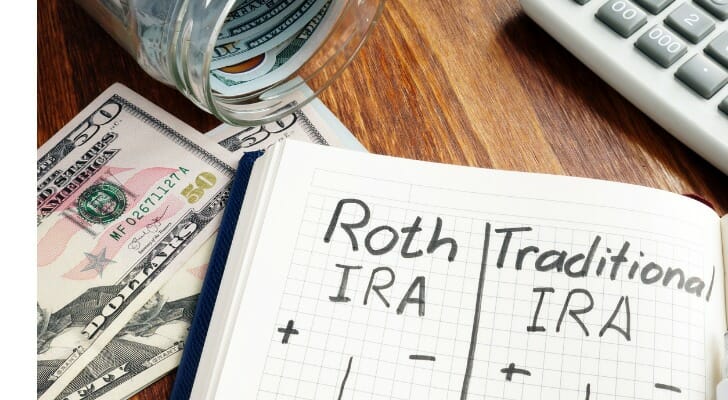Individual retirement accounts can offer a tax-advantaged way to save and grow your money for your later years. A traditional IRA offers the benefit of tax-deductible contributions, while a Roth IRA allows for tax-free withdrawals in retirement. When deciding which type of IRA to contribute to, one question you might have is: how many IRAs should I open? Technically, it’s possible to have multiple IRAs, but there are a few rules to know about using this strategy to save for retirement.
If you think you might need more hands-on guidance as you navigate your IRA decisions, consider enlisting the help of a trusted financial advisor.
How Many IRAs Does the IRS Allow?
The IRS doesn’t cap the number of IRAs any individual can have open at once time. It’s possible then to have multiple IRAs for retirement savings. For example, if you’re self-employed, you might have a SEP IRA, which allows you to make contributions as both an employer and an employee. The government treats a SEP IRA as a traditional IRA for tax purposes. But you could also have a Roth IRA open as well if you meet income eligibility requirements.
For 2026, single filers and those claiming head of household status can make the full annual contribution to a Roth IRA if their modified adjusted gross income (MAGI) is less than $153,000 (up from $150,000 in 2025). The MAGI limit for making a full contribution to a Roth is $242,000 for married couples who file a joint return (up from $236,000 in 2025). Couples filing separate returns can make a reduced contribution to a Roth IRA only if their individual modified adjusted gross income is less than $10,000.
Even if you’re not self-employed, you could still open both a traditional and a Roth IRA, or have multiple IRAs of either one. For instance, you might already have an IRA but decide to open a self-directed IRA to expand your investment horizons. Self-directed IRAs are offered by brokerage firms and they allow you to invest beyond stocks, mutual funds or bonds. For example, you could use a self-directed IRA to invest in real estate or private market securities.
Benefits of Opening Multiple IRAs

One of the chief reasons to consider opening multiple IRAs is to increase diversification in your portfolio. Diversification manages risk in your investments and avoids overweighting your portfolio too heavily in any one direction.
Having multiple IRAs also makes sense if you want to employ different investment strategies, says Michael W. Landsberg, principal and chief investment officer at Landsberg Bennett Private Wealth Management in Punta Gorda, Fla. For instance, you may have one IRA in which you pursue a passive investment strategy through indexing while another IRA is designed for actively managed funds.
Landsberg says investing in multiple IRAs is also something to consider if you’d like to have different beneficiaries for your retirement accounts. You may want to earmark funds in one IRA for your spouse, then set up additional IRAs that each of your children could inherit.
Required minimum distributions, or RMDs, can also play a part in your decision whether to have one or more IRAs. RMDs are associated with traditional IRAs, people 73 or older must begin taking distributions from their accounts (the RMD age jumps to 75 for people born in 1960 or later). Life expectancy and the value of your account determine those distributions. Failure to take RMDs on schedule can result in a tax penalty of up to 25% of the amount you were required to withdraw. That penalty may drop to 10% if you correct the RMD within two years.
It’s a strategy that Landsberg’s firm employs when necessary. “We’ll use another IRA to hold cash for future RMDs, so if we’re rebalancing or putting aside profits after a good run in the market, we park it inside another IRA which doesn’t have any market risk,” he says.
Having multiple IRAs can also help with managing other aspects of your tax liability in retirement. With a traditional IRA, it’s possible to get an upfront deduction on your contributions, which could be valuable during your peak earning years. But, you’re not avoiding tax on those contributions or earnings, only delaying it until retirement. Having a Roth IRA you can make tax-free withdrawals from could help offset the taxable withdrawals associated with a traditional IRA.
And, if you need to withdraw money from your IRA prior to age 59 ½, you’d be able to withdraw your Roth IRA contributions without triggering a penalty or income tax. However, this only applies to your contributions (which have already been taxed). To withdraw Roth IRA earnings penalty- and tax-free, your first Roth contribution must have been made at least five years earlier. You could withdraw money from a traditional IRA early but unless an exception applies, you’d face both the 10% early withdrawal penalty and regular income tax on the distribution.
Multiple IRAs Don’t Mean Unlimited Contributions
For 2026, the maximum contribution allowed to either a traditional IRA or a Roth IRA is $7,500 (up from $7,000 in 2025). The limit tops out at $8,500 when you factor in the $1,000 additional catch-up contribution allowed for savers aged 50 and older.
The most important thing to know about having multiple IRAs is that this is an aggregate limit, not an individual one. In other words, the total amount you contribute across all your IRAs can’t exceed the annual contribution limit.
This is necessary to prevent people from abusing IRAs to gain tax advantages unfairly. For instance, say the limit applied to individual IRAs. People could feasibly open multiple traditional IRAs and max out each one up to the point that they’d be able to reduce their taxable income to zero using their deductible contributions. Or, they could funnel thousands of dollars a year into multiple IRAs and not have to pay a dime of tax on withdrawals in retirement.
Bottom Line

Having multiple IRAs could mean paying more in investment and management fees. This is particularly relevant if your accounts are held at different brokerages. It may be possible to minimize the bite taken by fees by holding multiple IRAs at the same brokerage. That can also make it easier to manage your asset allocation in each account and rebalance them accordingly. Rebalancing is important for maintaining diversification and managing risk.
Tips for Managing Individual Retirement Accounts
- A financial advisor can help you open and manage your IRAs, providing investment recommendations and strategy. Finding a financial advisor doesn’t have to be hard. SmartAsset’s free tool matches you with vetted financial advisors who serve your area, and you can have a free introductory call with your advisor matches to decide which one you feel is right for you. If you’re ready to find an advisor who can help you achieve your financial goals, get started now.
- SmartAsset’s asset allocation calculator is a guide for how to divide your investments among different types of assets.
SmartAsset follows a rigorous and detailed Editorial Policy, that covers principles surrounding accuracy, trustworthiness, editorial independence, expertise and objectivity.
Photo credit: ©iStock.com/designer491, ©iStock.com/shapecharge
